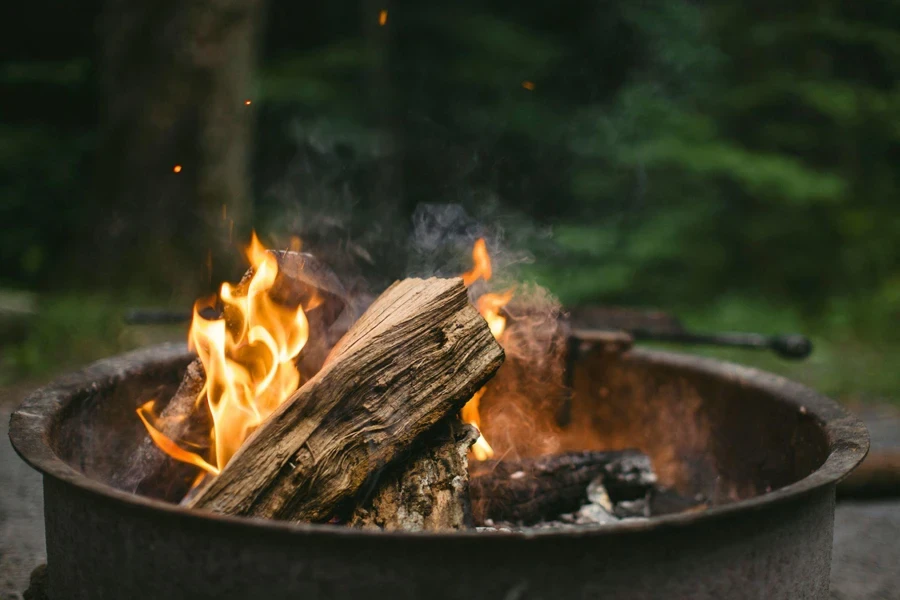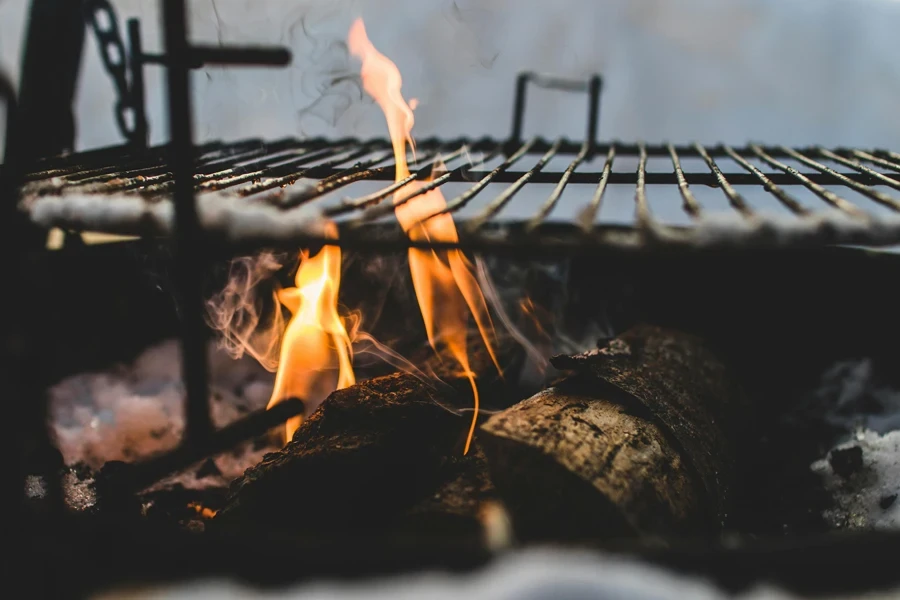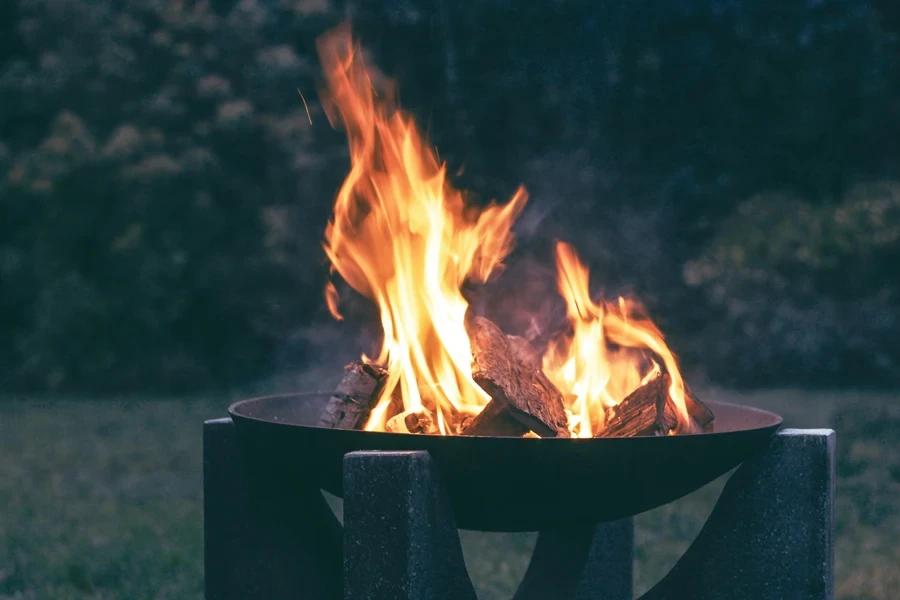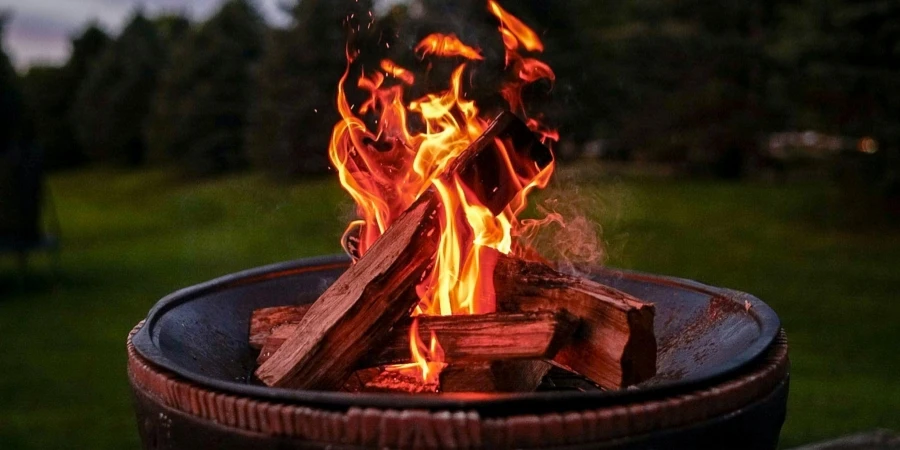Table of Contents
● Introduction
● Market overview
● Things to consider when selecting fire pits
● Some types of fire pits and their features
● Conclusion
Introduction
Choosing the right fire pit is pivotal for enhancing outdoor living spaces, transforming them into cozy, welcoming environments for relaxation and social gatherings. Whether for a private backyard or a commercial outdoor area, the appropriate fire pit significantly elevates the aesthetic appeal and functionality of any space. By providing warmth on cool evenings and serving as a stylish focal point, fire pits encourage longer, more enjoyable outdoor activities. Moreover, selecting a fire pit that aligns with safety standards and space considerations ensures a seamless integration into outdoor decor. Careful consideration of these aspects ensures that the investment adds value, beauty, and utility to outdoor settings. This not only enhances safety and functionality but also ensures that the fire pit complements other landscape and architectural elements effectively. The materials used, the ease of use, and the maintenance requirements are also important factors. For instance, a fire pit that matches the deck or patio materials creates a harmonious look, while one that requires minimal upkeep offers convenience to homeowners.

Market overview
The fire pits market in North America has been expanding significantly, with a market size estimated at USD 2.74 billion in 2022 and a projected growth rate of 5.8% CAGR from 2023 to 2030, as per the Grand View Research. This growth is driven by increased interest among homeowners in enhancing outdoor living spaces, rising property sales, and urban lifestyle shifts. Fire pits are not just functional additions, providing warmth and light, but also serve as central features that enhance the aesthetic and social value of outdoor areas. Market shares for fire pits vary by type, with wood-burning fire pits maintaining a dominant position due to their traditional appeal and the authenticity they bring to outdoor settings. However, there is accelerating interest in propane fire pits, which are expected to grow at a CAGR of about 9.2% during the forecast period.
Propane fire pits are appreciated for their convenience, cleanliness, and safety, offering easy maintenance and instant heat without the smoke and debris associated with wood fires. In terms of market trends, there is a noticeable push towards smokeless and eco-friendly options, reflecting a broader consumer preference for sustainable and health-conscious choices in outdoor living products. Innovations in fire pit design and functionality continue to cater to a diverse range of consumer needs, from portable models for small spaces to elaborate, multi-functional units that serve as both heating solutions and decorative garden features. This shift is guided by consumer demand for versatility and style in fire pits, impacting preferences and driving market dynamics in the sector.

Things to consider when selecting fire pits
Functionality and purpose
When selecting a fire pit, understanding the distinct functionality and purpose based on whether it is for residential or commercial use is crucial. Residential fire pits often serve as centers for family gatherings or as aesthetic enhancements to a garden or patio, providing warmth and a natural gathering spot. In contrast, commercial fire pits, typically found in restaurants, hotels, or broader commercial spaces, not only need to cater to aesthetic values but also require higher durability and safety standards to accommodate frequent use by a larger number of people.
Safety considerations
Safety is paramount when integrating a fire pit into any outdoor area. Placement is critical, with a necessity to maintain a safe distance from flammable structures and materials, a consideration highlighted by fire pit manufacturers. Additionally, local regulations may dictate specific safety measures, including the type of fire pits allowed, restrictions on fire pit usage during certain conditions, and safety precautions that must be adhered to. The choice of materials also plays a significant role in safety. For instance, cast iron is renowned for its heat retention and durability, making it a popular choice for both security and longevity.
Material and build quality
Each material has its advantages and disadvantages. Cast iron is durable and excellent at retaining heat but can be quite heavy, which might limit its portability. Stainless steel offers a lighter alternative, is resistant to rust and corrosion, and is suitable for humid climates. Composite materials provide modern aesthetics and are designed to be lightweight and heat efficient, though they might not offer the same rustic, traditional appeal as metal options.

Design and aesthetics
The design and aesthetics of a fire pit should harmonize with the existing outdoor décor and landscaping. The fire pit should complement the surrounding elements, be it through matching materials, styles, or colors. For residential settings, a fire pit can serve as a charming focal point around which garden furniture is arranged. For commercial spaces, it must blend seamlessly with the overall design theme while also standing out enough to attract the attention of people.
Some types of fire pits and their features
Wood-burning fire pits
Wood-burning fire pits offer a traditional charm that enhances any outdoor space with the natural ambiance of crackling logs and the nostalgic scent of burning wood. These pits come in a variety of designs, from rustic to contemporary, allowing them to blend seamlessly with any outdoor decor. However, they require ample space due to smoke and ash production, which can be considerable. The joy of gathering around a real wood fire, with its soothing sounds and visual appeal, makes this type a perennial favorite for those with sufficient outdoor room to accommodate it safely.

Gas fire pits
Gas fire pits are celebrated for their convenience and cleanliness, eliminating the mess associated with ash and smoke. These fire pits require a connection to a natural gas line or a propane tank, necessitating professional installation. The versatility in design is significant, with options ranging from simple, minimalist bowls to elaborate, sculptural pieces that can serve as the centerpiece of a garden or patio. This type of fire pit is particularly suited for sophisticated outdoor settings where ease of use and low maintenance are prized.
Propane fire pits
Propane fire pits offer exceptional mobility and ease of maintenance, making them a practical choice for many homeowners. These units are portable, allowing them to be moved as needed across different outdoor areas—from patios to open backyard spaces. Their built-in safety features, which make propane fire pits an ideal option for environments where children and pets are present. The quick ignition and controlled flame provide warmth without the hazards of flying sparks or uncontrollable fire spreads.
Smokeless fire pits
Smokeless fire pits utilize innovative technology to minimize smoke output, making them ideal for use in smaller or more enclosed spaces where air quality might be a concern. These pits often employ advanced airflow techniques that burn off smoke before it can be released into the air, thereby reducing particulate emissions and enhancing the enjoyment of the fire experience. This technology also contributes to a cleaner environment, aligning with the preferences of environmentally conscious consumers.
Bioethanol fire pits
Bioethanol fire pits are noted for their eco-friendly fuel source, which burns cleanly without emitting smoke or odors. These fire pits are incredibly versatile and suitable for both indoor and outdoor use, as they do not produce emissions that require venting. The sleek and modern designs available, which are well-suited to contemporary décor themes. The clean-burning of bioethanol also means these fire pits are easy to maintain, adding warmth and style without the environmental footprint of traditional wood fires.

Conclusion
Selecting the right fire pit involves balancing functional needs with aesthetic preferences to enhance outdoor living spaces effectively. The ideal fire pit not only meets specific heating requirements but also complements the surrounding environment, adding both warmth and style. Whether opting for a traditional wood-burning model that offers the classic fire experience or a modern propane pit that provides clean and hassle-free operation, the choice should reflect the overall design and usage goals of the area. It is also vital to consider the environmental impact and personal lifestyle when choosing a fire pit. Eco-friendly options like bioethanol or smokeless fire pits minimize harmful emissions and reduce the carbon footprint, aligning with sustainable living practices. For those who value convenience and minimal maintenance, gas or propane fire pits might be the preferable choice. Ultimately, the selection should enhance the quality of life by providing a safe and enjoyable outdoor gathering spot that aligns with one’s environmental values and lifestyle needs.




